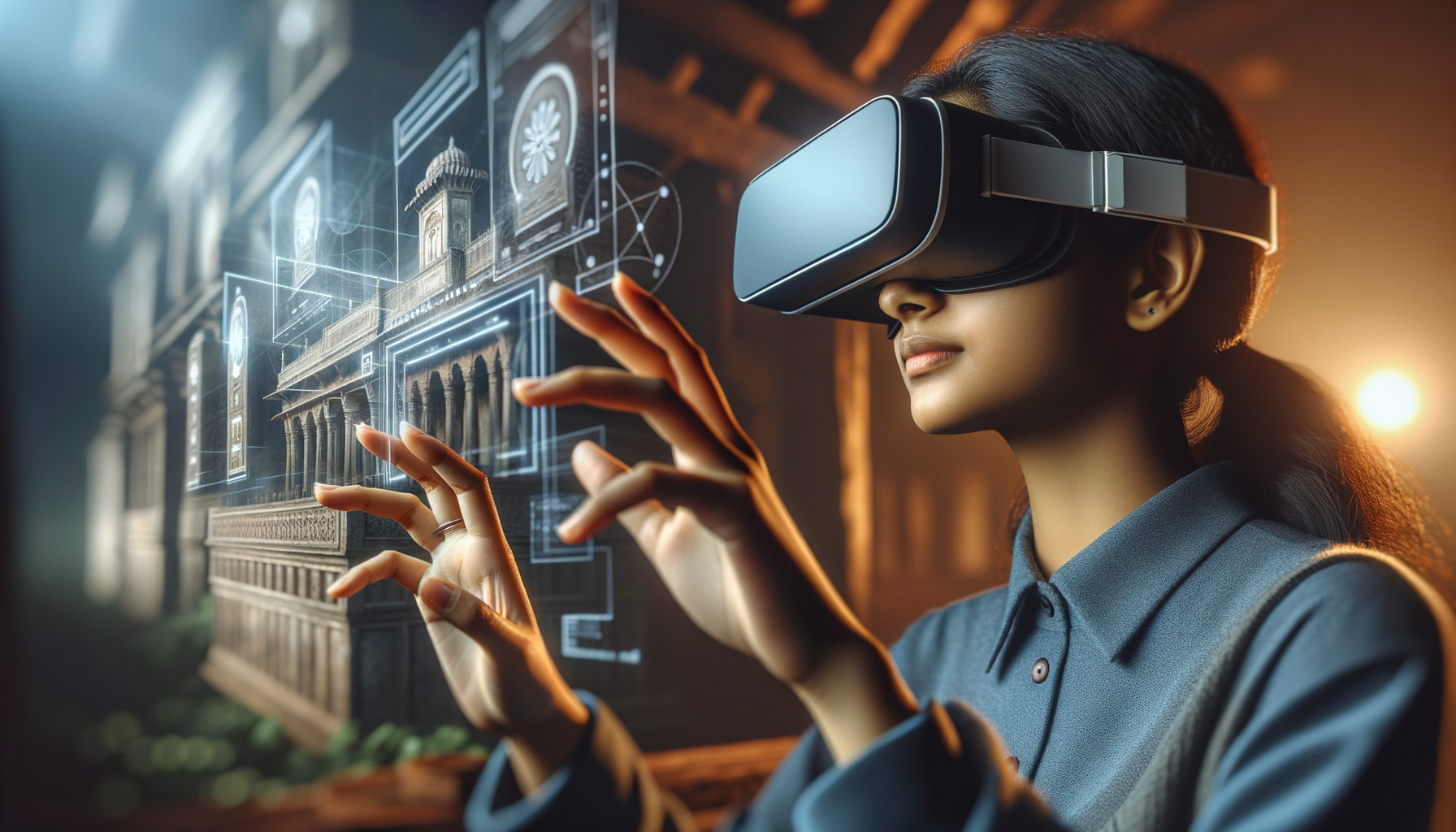Virtual reality, once an imaginative idea is no longer a distant concept. Instead, it is drastically changing the educational world. As per a report by EdSurge in 2022, over 80% of educators believe that virtual reality positively impacts student engagement.
But how?
As we are stepping into this transformative domain, it is important for us to first understand the different facets of virtual learning. Let’s start with it’s evolution in education first.
Over the past decade, Virtual learning has evolved from a niche technology to an integral part of the educational toolkit. Whether it is about virtual field trips to industrial and risky setup or immersive science simulations, educators are actively using the VR technology to bring life to the subject matter.
Designing Engaging Virtual Learning Experiences
When it comes to creating an immersive experience for the students it is not hard as rocket science. All you need to do is have a thoughtful design and take close considerations on how to teach it effectively.
Interactive Learning Modules
Gone are the days where lectures and rote memorization was given importance to teach students.
Today, all the educators are adopting more immersive and interactive learning experiences like virtual reality technology. Among all the approaches teaching with interactive learning modules has resulted in creating a highly enriched learning environment where students are allowed to engage with the content that lasts an impact.
At the core of interactive learning, it is all about immersion.
When students wear a VR headset and step into the immersive virtual environment, be it about having a dive deep into the ocean or looking into the intricate network of arteries inside the human body, they are not the passive observers anymore. Instead, they become the active participants. This immersive experience offered by virtual reality labs in higher education amplifies the students’ understanding and retention of complex concepts.
Let’s take a look at the biology class equipped with VR technology. In this class when students are asked to understand the cellular structures, rather than just relying on the 2D diagrams or the complex illustrations, they can actually step inside the virtual human body lab. They can dissect the virtual organs, manipulate the cellular components to see its reaction and observe all the biological processes in the real-time as if they are doing all this on real-patients but in a safe and risk-free environment.
Isn’t this a remarkable tool to provide hands-on experience to the students.
But, what about the benefits? How do these interactive learning modules help students?
Well, it results in-
- Enhanced Engagement – Learning with an interactive module captivates the attention of the students. For example with VR engineering, budding engineers can develop a deeper sense of engagement with the subject matter.
- Personalized Learning– Within the virtual environment, the students can learn at their own pace. They can explore topics of their own interest. Thus, catering to individual learning styles and preferences.
- Real-world Application– Unlike the traditional learning approach, the interactive learning modules in the VR can actually bridge the gap created between theoretical or textual concept and its real-world application. Precisely, it prepares students for the challenges and opportunities that will come in way into their future pursuits.
Gamification for Enhanced Engagement
Well, who doesn’t love games?
But what if these elements get incorporated into the education system?
Incorporating gamified elements into education has evolved as an impactful strategy, resulting in spiked engagement rates and motivation among students. By integrating game mechanics and principles into learning experiences, educators can create dynamic environments where students are motivated to achieve and excel.
But why?
A compelling body of research underscores the efficacy of gamification in education. According to Journal of Educational Psychology, incorporating different game elements, such as rewards, challenges, and feedback mechanisms in learning environments, significantly improves learning outcomes of the students.
Benefits of Gamification
- Increased Motivation– Rewards, points, badges, and other game elements results in motivating the students to participate with the subject matter and strive for excellence.
- Enhanced Learning Outcomes– Gamification promotes active learning, helping students develop essential skills and knowledge in a dynamic and interactive environment.
- Positive Learning Experience– When educators transform complex lessons into engaging experiences, it creates a positive learning environment where students can explore, learn, and grow.
Measuring Success in Virtual Learning
Evaluating the effectiveness of VR for higher education institutions goes way beyond the traditional evaluation metrics. For this, there is a need from the educators to employ a nuanced approach that includes-
Quantitative Assessment Metrics
Quantitative data, such as improved test scores and completion rates, provides a tangible measure of success. A study conducted by Stanford University found that students taught through VR methods scored 30% higher in retention tests compared to those taught through traditional methods.
Qualitative Feedback and Student Engagement
Equally important is gathering qualitative feedback from students. Surveys, focus group discussions, and anecdotal evidence can offer insights into students’ experiences and preferences. High levels of engagement, curiosity, and enthusiasm are strong indicators of the success of virtual learning initiatives.
Conclusion
To sum up, mastering the virtual classroom in higher education institutions needs a holistic approach that includes technological use, pedagogy, and well-being of the students. As we continue to look into the virtual classroom revolution, let’s remember that the goal is not just to replicate traditional classrooms in a virtual space but to unlock new dimensions of learning that were previously unimaginable.
Are you moving in the right direction?
Read More:- VR for Mental Health Theory




